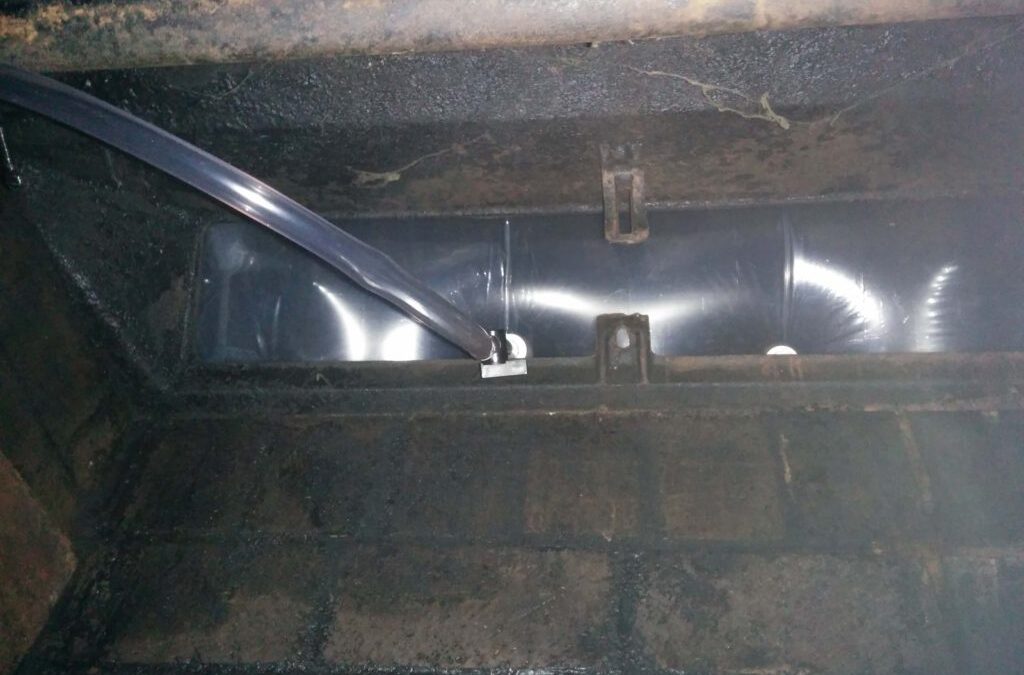
by blogediter | Aug 30, 2023 | Chimney Plugs
You are probably saying to yourself: “Wait, aren’t you the Chimney Balloon guy? Why would you tell me reasons Chimney Balloons are a bad idea?”
The reason is, I am an honest guy. And there is no chimney plug or metal damper that is the absolute best for every kind of fireplace and every home out there. There is no one size fits all magic product, and there are no chimney plugs or dampers that will make everyone happy. They all have advantages and disadvantages. I am writing a series of blogs that cover each kind or metal damper and chimney plug, and what they are good at, and not so good at.
If you think, I will just call my chimney sweep guy and he will clean my chimney and make all the bad soot go away, and he will tell me how to fix my drafty, buggy, or stinky chimney. You will get your chimney cleaned and 99% of the time they will pitch you for a chimney top damper that will cost $400 to $900 (depending upon how dangerous it is to get to your chimney crown).
Then you will find that a top seal damper closes the chimney, but creates more stink. Often a top seal damper makes the draft worse and the stink worse because you are bottling a chimney at the top. We sell all kinds of chimney plugs to new top seal damper owners. Because to fix drafts and chimney stink, you have to seal a chimney low and tight.
Chimney Balloons are not the best solution for every fireplace and wood stove chimney. But they are the best solution for some fireplace applications, and I will tell you which are the good ones and the bad ones.
First lets cover what Chimney Balloons are good for:
1) Chimney Balloons work well if you need a safety breakaway. Look, every household has a klutz in it. If you think there cant be one in your house…hmm maybe you might be it? Or maybe you have a visiting klutz that comes over at Thanksgiving? Anyway, if you need a chimney plug that will break away and fall out if someone lights a fire under it by accident, then an inflatable Chimney Balloon would be a fit. Especially if the chimney you are plugging is a long or a short term rental. People do weird stuff in rentals, so make sure you leave a clear and unmistakable sign in the firebox that the chimney is plugged.
2) Chimney Balloons work well if you need an extra tight seal to keep out bats or insects. Little critters can get through extra small spaces, and creep around corners. Insect mandibles and bat teeth cannot puncture a Chimney Balloon. Since a Chimney Balloon inflates wall to wall and pressure fits. It is an impenetrable barrier for those little critters. It also works well to seal kitchen smells from wafting up the flue. Kitchen smells rise up and out with heat, and often attract in flies and bugs.
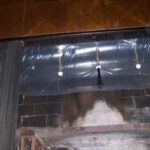
Chimney Balloon in wide open flue
3) Chimney Balloons work very well with open flues with no hardware. You can often get the tightest seal with a Chimney Balloon. The wall to wall pressure fit is ideal for sealing a straight wall chimney. Thanks to a variety of HEK handle extenders you can even install a Chimney Balloon a bit higher in the chimney flue. This is a unique accessory.
When Chimney Balloons are a bad idea?:
1) Chimney Balloons are a bad idea, when you don’t have enough vertical space . Small Chimney Balloons are about 5″ tall when inflated, and Large Chimney Balloons are about 9″ tall. You also have to accommodate the 6″ black handle valve sticking down the bottom. Sometimes a Chimney Balloon simply cant fit the area you want to put it in. The Flueblocker chimney plug has a 1″ thick wool pad, and a removable handle, that is better for tight spots with little vertical space.

When Chimney Balloons are a bad idea
2) Chimney Balloons are a bad idea, when the walls are opening downward. The Chimney Balloon needs to grab the walls in the location it is trying to install. If the walls are metal, and have no texture. Or they are sloped opening downward too sharply, then the Chimney Balloon can’t grab the walls.
3) Chimney Balloons are a bad idea, when there is sharp hardware like screws of exceptionally abrasive walls. Chimney Balloons are inflatable. They have a tough but flexible multi layer membrane, but they are subject to getting punctured. They can also wear out over time. We have more durable chimney plugs like the Flueblocker that will hold up better to rough walls and sharp hardware.
4) Chimney Balloons are a bad idea, if you use your fireplace a lot. Speaking of bad ideas...using your fireplace a lot is a bad idea as well. But Chimney Balloons take some effort to install and take out. If you use your fireplace a lot, then it is likely a sooty and ash laden mess in your firebox and flue. There are easier ways to seal off the damper.
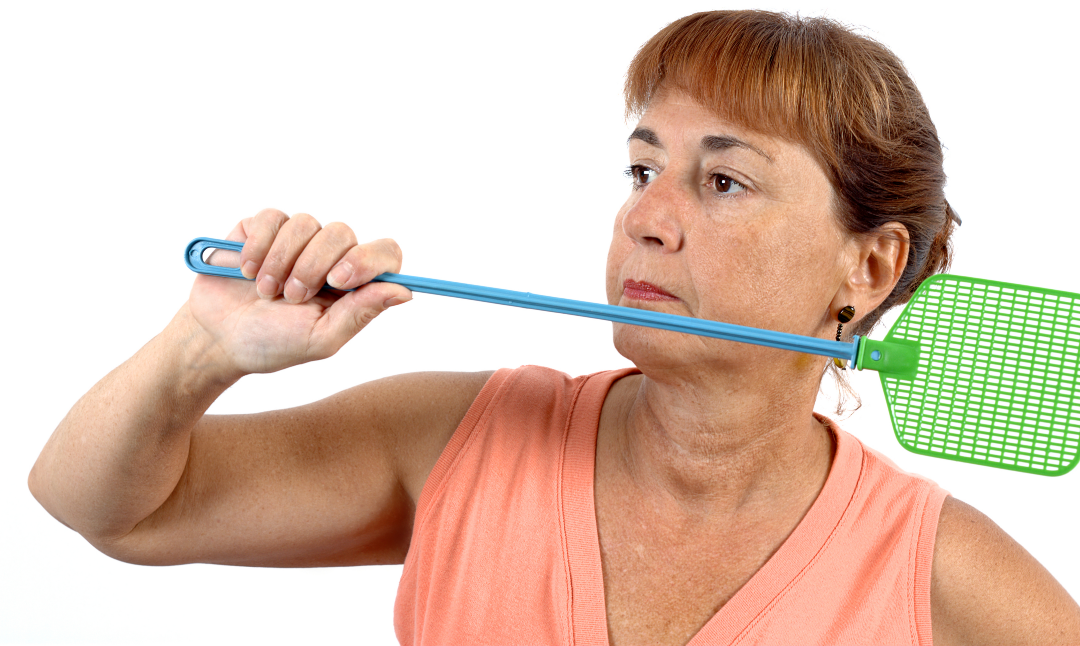
by blogediter | Jun 23, 2023 | Chimney Plugs
Want to know how to keep wasps and flies out of your home?
We have 6 easy DIY steps that can help you keep wasps and flies out of your home, and stop other even more destructive bugs from infesting your home this summer.
My son loves bugs, he always has. Ant hills, spider webs, beetle burrows… He finds them all fascinating. However the rest of the family is not a fan, so I keep a pretty strict regimen of preventative measures to keep wasps and flies and termites and all kinds of creepy critters outside the boundaries of our house.
Here are some measures that keep wasps and flies out of our home:
- Wash fruit with vinegar water and keep it in the fridge. Fruit comes from all over the globe, and tends to have insect eggs and spores on it. I won’t bother you with the gory details, but you should really wash your fruit in water with a cup of vinegar. If you need to ripen some fruit, keep it in the shade on the back porch, not inside.
- Check and repair the loose and full open hidden openings to your house. Your dryer vent and fireplace damper are examples of loose openings. They close, but not tightly. You may wonder how to keep wasps from building nests in the chimney. Don’t rely on your fireplace damper to close your chimney tight enough to keep bugs or bats out. Install a wool Flueblocker or Chimney Balloon to seal it off super tightly. Clean the lint off flapper on the outside and make sure the hinge is working, so the flapper closes tightly when the dryer is off.Often a home builder will cut a hole in the wall of the home for a pipe or wires to come through, but they leave extra space around the hole. Use foam and caulk to close all of those penetrations in the homes envelope to keep wasps and flies out of your home as well as crawling bugs.
- Check the weatherstripping around your doors and put your porch lights on motion sensors. Weatherstripping keeps out the bugs, but it takes a beating over time as the door is used. It is very easy to replace weatherstripping with self-adhesive strips.Porch lights draw in flying and crawling bugs at night, and when you go through your door the mosquitoes and other bugs like a to hitch a ride into the house. Putting your lights on motion sensors limits the time your light it on, and keeps wasps and flies out of your home.
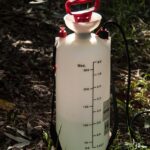
Sprayer to keep wasps and flies out of your home
- Keep shrubs from touching the side of your house and spray a boundary around your home. Keep your shrubs and other vegetation trimmed so it does not come in contact with your outer walls of your home. This will limit crawling bugs from getting in the walls. At the base of the walls spray a boundary spray. I use Taurus SC mixed into a garden sprayer, but you can use ready to spray kits like Ortho Home defense.Spray a 4″ to 6″ boundary on the base of the exterior wall all the way around the house and around each bottom level window. Give special attention to downspouts and any pipe or wire penetrations in the home envelope. Just be sure to follow the directions on the pesticide label.
- Trees are routes of bug entry too. Each year while I am on my roof cleaning the solar panels and scooping out the gutters, I use my bug boundary spray up there too. I spray the our edge of the roof deck by the gutters, and around any vents that come through the roof. I also spray the crown of my fireplace chimney and around the cap. This helps to keep wasps and flies out of your home, since they love to follow cooking smells down the chimney.
- Lets talk termites. If you live in an area with termites (like I do in SC) then you need to take them seriously. They can get inside of any house, and you wont even see their entry point since they are subterranean. Every 7 years I do a termite trench with Dominion 2L all the way around my home. Termite trenching is when you dig a 6″ trench line at the base of your outside wall you saturate the dirt with termiticide and put it back in the trench.
Termite trenching effectively creates a bug-killing moat around you home. If you are not so keen on that much shoveling, you can hire a company to do this for you. They often offer an insurance for their work called a termite bond. If you decide to DIY it, as always be sure to follow the directions on the label.
It is hard to keep wasps and flies out of your home, as well as ants, termites, cockroaches, spiders, etc… but it is worth the effort.
Maintaining a home is tough work, especially if you are a DIY kind of person. You can always hire a company to do this work for you, but it is worth the knowledge of knowing how to DIY it if you need to keep wasps and flies out of your home.
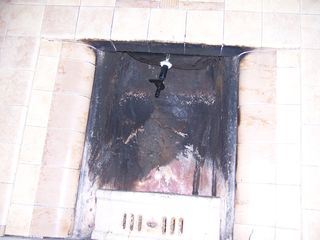
by blogediter | Jun 28, 2019 | Gas Logs, Chimney Plugs, Chimney Problems
Q: Jason, We have a coal-burning fireplace that we will never use. The chimney has a smoke shelf and (as far as I can tell) no damper. The chimney measures 14 X 16 just above the smoke shelf. I guess that means we will need to order a custom Chimney Balloon. How much would that cost and how do we go about doing it? – ST
A: ST, Just to be on the safe side I would go with a 15”X18” custom Chimney Balloon.
FYI, If your smoke shelf is far up your chimney you can also measure the space below the smoke shelf and before the damper if that allows enough space for the Chimney Balloon. The most important thing is to look for the most convenient space to reach. If the best location is higher than 12 inches past where you can touch with your hand, consider purchasing an HEK Extender with your Chimney Balloon. – Jason
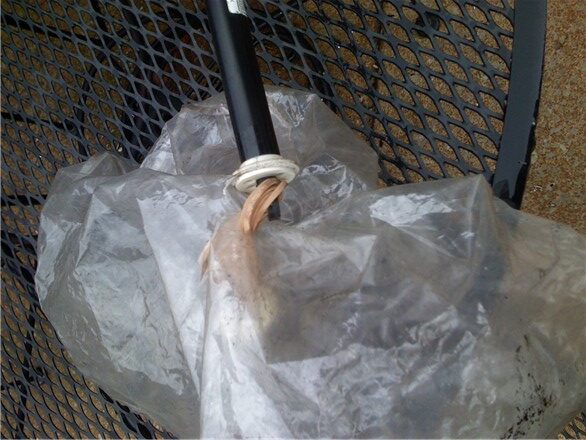
by blogediter | Jun 24, 2019 | Chimney Plugs, Chimney Problems
Q: Jason, I have a Large 36 x 15 Chimney Balloon and over the period of 1 week it tends to get soft and let outside air blow by it. It doesn’t get totally limp or fall from the chimney. Is this normal? RP
A: RP, No it is not normal. The Chimney Balloon is designed to be air tight and should only need a little extra air every 12 months. It probably has a small pin-hole by the seams and as it loose a little air pressure the pin hole closes and keeps it from gong totally limp. The Poly tri-laminate that makes up the balloon portion of the Chimney Balloon is a very tough material that resists stretching and abrasions very well but occasionally a sharp bit of metal or hardware in the flue can puncture all 3 layers of a balloon and cause this to happen.
The fix is very easy. Find the hole, cut a oval patch out of some thick gauge packaging tape, and tape over the hole. The toughest part is finding the hole. What our testing and return personnel do to find and patch a pinhole is:
1)They inflate the balloon with an cordless air pump untill it is drum tight full. Then they passs the balloon under a showerhead to make sure all the soot residue has been removed, and they dry the balloon off with a rag.
2)Then they hold the balloon about 3 inches from their eyelashes and pass the entire surface of the balloon past their eyelash. The cheek and the eye are so sensative to air currents that it will be easy to sense when the pinhole passes by the eye or cheek and blows air at it. they then inspect that area closely with a flashlight to find the exact spot that the hole is at.
3)They cut an oval patch out of very thick gauge 3M packaging tape and they place the patch over the hole so there are no bubbles or wrinkles under the patch.
4)Then they let the Chimney Balloon set for 48 hours fully inflated to make sure it doesn’t loose any air.
If you want to do this on your own you are welcome to do it yourself. Or you can mail it to our return testing lab with a note explaining the situation. They will be happy to do it for you and return it to you free-of-charge.
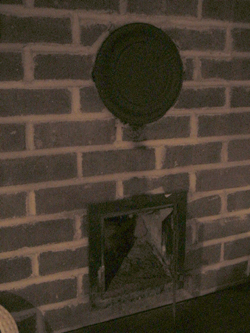
by blogediter | Jun 12, 2019 | Chimney Plugs
Q: Dear Jason, I have a chimney which used to be used for a wood burning stove. We removed the stove and wish to stop the cold air entering the house through the round chimney hole that is left. Basically, there is a hole in the wall of our house that leads to the chimney and I just have it covered with a loose fitting metal cover. Can your chimney pillow work in this situation?
My husband was thinking of stuffing the chimney hole in the wall with fiberglass, would this work? – EE
A: Dear EE, I am willing to bet you will find the diameter of that pipe to be 9″ or less so a 9×9 Chimney Balloon will work well. If it is over 9″ then you may need to go with a 12×12 Chimney Balloon.
If you call in your order we can adopt a 9×9 for you to have an extra short 3″ handle on it, so it is easier to put in the chimney pipe and clear the wall.
You will find the Chimney Balloon will air seal and insulate in one shot better than the fiberglass plug. The basement is generally the location that the home will draw in the air the strongest at due to the air stack effect in the home. The air will pass right through a fiberglass plug, but it won’t be able to draw through a Chimney Balloon. – Jason
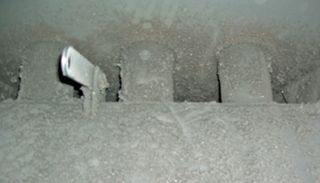
by blogediter | Jun 1, 2019 | Chimney Plugs
HEK Chimney Balloon
Q: Hi, I stumbled across your site today, and I am very interested in one of your Chimney Balloons. I have a question. My chimney has a system to take cold air off the floor in front of the hearth, and draw it through some pipes that run through the flue. This warm air is then fan forced out above the fireplace. The question is whether your Chimney Balloon will go between these pipes and the damper, or squeeze through between the pipes, and be inflated above them. I can take a digital picture and send or maybe take some measurements and send those… – CF
A: CF, Most people refer to those systems as heatilators (but that is a brand name.) A deflated Chimney Balloon needs a gap of 2″ to 2.5″ to fit through. Once you are through these pipes you should be good to go. I would suggest using a folding carpenters ruler to measure the pipes so you can tell how large a Chimney Balloon you need. You may need to consider an extension for your Chimney Balloon if you plan on reaching very far past the heatilator pipes to inflate the Chimney Balloon. The Handle/valve Extender kit (HEK) will give you an extra 16″ of reach to add to your 12″ Chimney Balloon handle.








